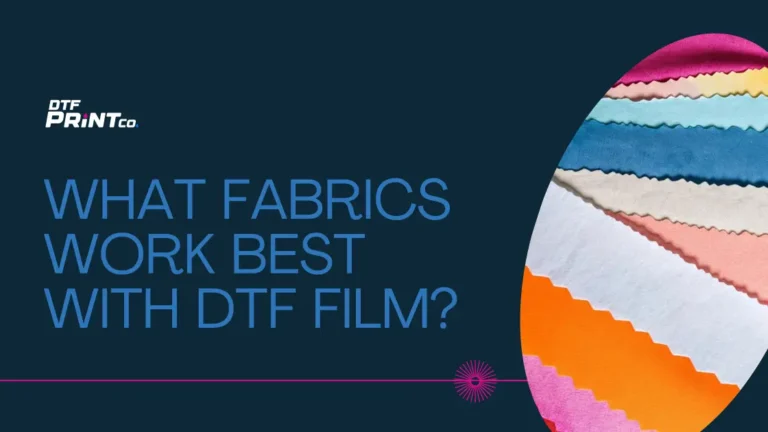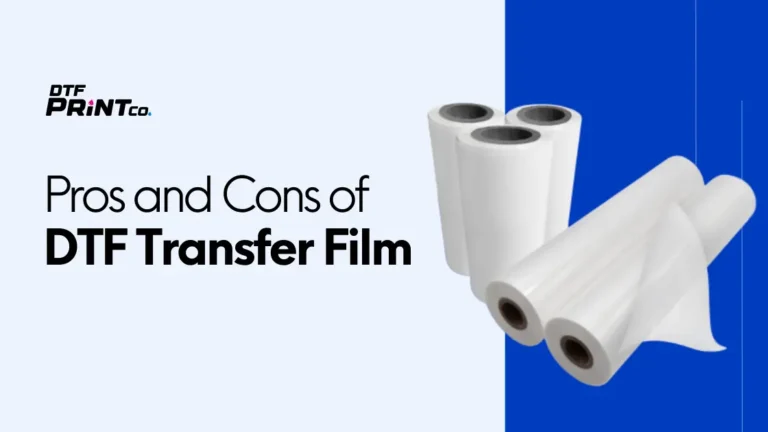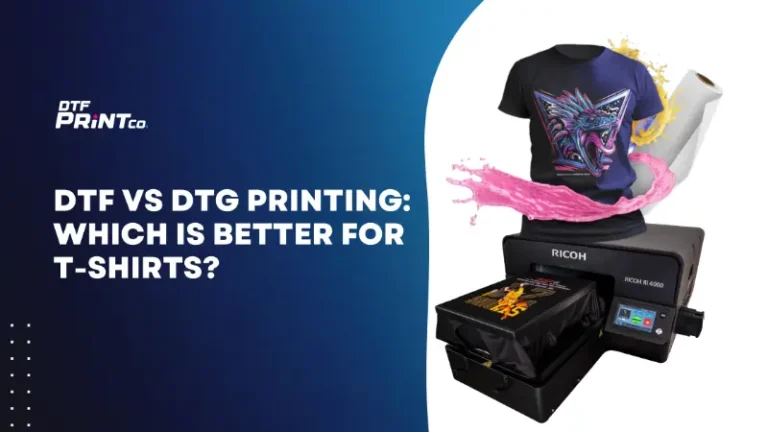
What Fabrics Work Best with DTF Film?
Choosing the right fabric is the #1 factor in ensuring the success of your DTF (Direct-to-Film) printing projects. DTF printing is rapidly gaining popularity because

Direct-to-Film (DTF) printing has gained tremendous popularity among businesses and DIY enthusiasts. With its ability to transfer intricate designs onto various fabrics, DTF offers a flexible and high-quality solution for custom apparel, accessories, and more. However, not all fabrics are created equal when it comes to DTF printing. Choosing the right material is crucial to ensuring the best possible results, both in terms of print quality and durability.
In this article, we’ll dive into the fabrics that are best suited for DTF printing, covering their unique qualities, challenges, and tips for achieving vibrant, long-lasting prints. Let’s get started!
Before we delve into fabric options, it’s important to understand how DTF printing works. The process involves printing a design onto a special film, which is then transferred onto fabric using heat and pressure. This method is highly versatile, allowing for rich colors, sharp details, and excellent durability. Unlike traditional screen printing, which can be limited to certain fabric types and colors, DTF works well with a wide range of materials, making it a go-to choice for various industries.
What makes DTF unique is its ability to handle both light and dark fabrics, its fine detail capabilities, and the ability to transfer onto a range of materials—from soft cotton to durable denim.
DTF printing can work on a variety of materials, making it a go-to choice for a wide range of products. Here’s a quick list of the materials you can print on:
With such a diverse list, DTF allows you to print everything from t-shirts and jackets to bags, shoes, and even home decor.
When it comes to DTF printing, cotton is a fan favorite—and for good reason. The natural fibers of cotton allow for excellent adhesion, vibrant colors, and long-lasting results. Whether you’re printing on a 100% cotton t-shirt or a cotton-poly blend, you’ll find that DTF transfers work especially well on this fabric.
Polyester is another fabric that’s particularly well-suited for DTF printing, especially in the world of sportswear and activewear. DTF prints on polyester tend to be vibrant, highly detailed, and resistant to fading. The synthetic nature of polyester allows the ink to bond better, which results in crisp prints that maintain their vibrancy even after washing.
Cotton-polyester blends offer the best of both worlds. You get the softness and breathability of cotton with the durability and color retention of polyester. DTF transfers adhere well to these blends, and the prints tend to be both vibrant and long-lasting.
Though nylon is heat-sensitive and requires a bit more care during the printing process, it can still yield fantastic results when using DTF. This fabric is particularly useful for jackets, outerwear, and other outdoor gear due to its strength and water-resistant properties.
For a more luxurious touch, silk and satin fabrics offer a smooth, shiny surface that can add a sophisticated finish to your prints. While these materials can be a bit more delicate, DTF printing on silk and satin is possible with proper heat and pressure adjustments.
Denim is a robust, textured fabric that lends itself well to custom prints. While denim’s thicker weave might require extra heat and pressure to achieve perfect adhesion, DTF printing on denim results in highly durable, stylish designs. It’s a popular choice for custom jackets, jeans, and even bags.
While DTF printing is highly versatile, different fabrics can present unique challenges. Here are some common issues and tips for overcoming them:
Some fabrics, especially darker colors or those with a loose weave, may experience bleeding or fading of the ink. To avoid this, ensure that you:
Fabrics like nylon and silk require precise adjustments to heat and pressure to ensure proper adhesion. If the heat press settings are too low, the print may not stick well. If they’re too high, the fabric could be damaged.
Stretchy fabrics, such as those with spandex or elastane, may distort your design if the heat and pressure are too intense. Use a lower temperature and shorter pressing time to avoid this issue.
DTF printing is an incredibly versatile and high-quality printing method that can be applied to a wide range of fabrics. By choosing the right material and adjusting your heat press settings accordingly, you can achieve vibrant, durable, and detailed designs that will last through repeated wear and washing. Whether you’re working with cotton, polyester, silk, or denim, understanding the fabric-specific requirements is key to creating professional-grade results. With the right approach, DTF printing allows you to unlock endless creative possibilities for custom apparel, accessories, and more.
The best fabrics for DTF printing include cotton, polyester, blends (cotton-polyester), nylon, silk, denim, and canvas. Each fabric type offers different benefits, such as durability, vibrancy, and texture, allowing DTF to work well across a variety of materials.
Can DTF printing be used on dark fabrics?
Yes! DTF printing can be used on dark fabrics, but you may need a white underbase layer to ensure that the colors appear vibrant and opaque. Proper pretreatment and heat settings are also essential for the best results.Is DTF printing suitable for stretchy fabrics?
DTF printing works on stretchy fabrics like spandex or Lycra, but extra care is needed. Use lower heat and pressure settings to avoid distorting the print or fabric. Always test the settings on a small area before applying to larger designs.
How do I prevent color fading on fabrics?
To prevent color fading, ensure proper pretreatment of the fabric, especially with darker materials. Also, adjust heat press settings correctly based on fabric type and use high-quality DTF inks and films. Avoid over-pressing and washing the items in cold water to maintain print longevity.
What are the most common issues with DTF printing on fabrics?
Common issues with DTF printing on fabrics include poor adhesion, color bleeding, and distortion on stretchy fabrics. To resolve these, ensure proper pretreatment, calibrate heat press settings based on fabric type, and test different temperatures and pressures to find the best combination for each material.

Choosing the right fabric is the #1 factor in ensuring the success of your DTF (Direct-to-Film) printing projects. DTF printing is rapidly gaining popularity because

DTF transfer film offers vibrant, durable prints on multiple fabric types with fewer setup costs than screen printing. It’s ideal for small batches and complex

Both DTF (Direct-to-Film) and DTG (Direct-to-Garment) printing are popular methods for customizing t-shirts, but each method has its strengths. DTF printing works well on various

2023 - 2024 © ALL RIGHTS RESERVED